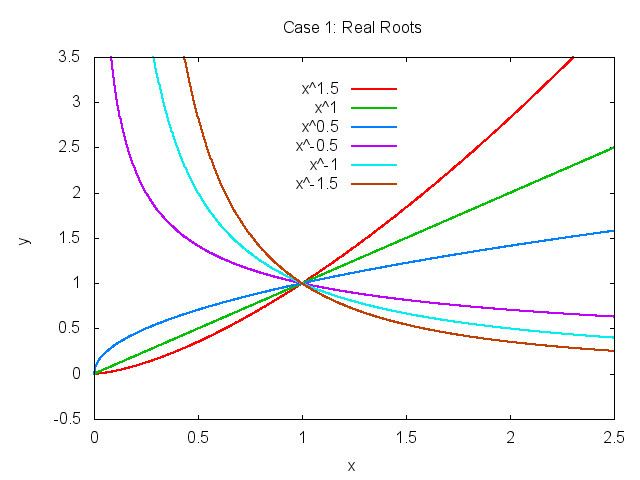 | ||
In mathematics, a Cauchy-Euler equation (most known as the Euler-Cauchy equation, or simply Euler's equation) is a linear homogeneous ordinary differential equation with variable coefficients. It is sometimes referred to as an equidimensional equation. Because of the particularly simple equidimensional structure the equation can be replaced with an equivalent equation with constant coefficients which can then be solved explicitly.
Contents
The equation
Let y(n)(x) be the nth derivative of the unknown function y(x). Then a Cauchy–Euler equation of order n has the form
The substitution
Second order – solving through trial solution
The most common Cauchy–Euler equation is the second-order equation, appearing in a number of physics and engineering applications, such as when solving Laplace's equation in polar coordinates. It is given by the equation:
We assume a trial solution given by
Differentiating, we have:
and
Substituting into the original equation, we have:
Or rearranging gives:
We then can solve for m. There are three particular cases of interest:
In case #1, the solution is given by:
In case #2, the solution is given by
To get to this solution, the method of reduction of order must be applied after having found one solution y = xm.
In case #3, the solution is given by:
For
This form of the solution is derived by setting x = et and using Euler's formula
Second order – solution through change of variables
We operate the variable substitution defined by
Differentiating:
Substituting
This equation in
Now, if
If the roots are distinct, the general solution is given by
If the roots are equal, the general solution is given by
In both cases, the solution
Hence, in the first case,
and in the second case,
Example
Given
we substitute the simple solution xα:
For xα to be a solution, either x = 0, which gives the trivial solution, or the coefficient of xα is zero. Solving the quadratic equation, we get α = 1, 3. The general solution is therefore
Difference equation analogue
There is a difference equation analogue to the Cauchy–Euler equation. For a fixed m > 0, define the sequence ƒm(n) as
Applying the difference operator to
If we do this k times, we will find that
where the superscript (k) denotes applying the difference operator k times. Comparing this to the fact that the k-th derivative of xm equals
suggests that we can solve the N-th order difference equation
in a similar manner to the differential equation case. Indeed, substituting the trial solution
brings us to the same situation as the differential equation case,
One may now proceed as in the differential equation case, since the general solution of an N-th order linear difference equation is also the linear combination of N linearly independent solutions. Applying reduction of order in case of a multiple root m1 will yield expressions involving a discrete version of ln,
(Compare with:
In cases where fractions become involved, one may use
instead (or simply use it in all cases), which coincides with the definition before for integer m.
